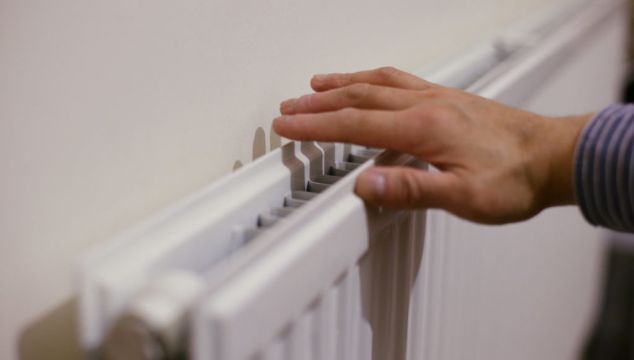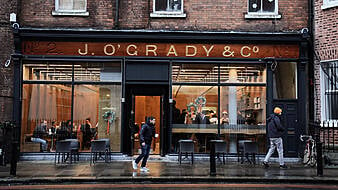What is the cost of living?
As the name suggests, the cost of living relates to the amount of money it takes to cover basic, essential costs. This factors in expenses such as, but not limited to, the costs of groceries, housing (rent or mortgage repayments), bills (heating, electricity, Internet, etc.), car-related expenses, healthcare and taxes.
The cost of living varies from country to country, but there can also be large divides within the country. For example, the availability of public transport may reduce car-related costs for someone living in an urban area, while higher rents/house prices could also drive up the cost of living in some areas compared to others.
The cost of living is monitored over a set period of time, allowing us to compare how expenses have gone up or down during that period, be it a month, a year, a decade, etc.
Why is the cost of living going up?
High levels of inflation is the driving-force behind recent increases in the cost of living.
Put plainly, inflation is the reduction in how much you can buy with the same amount of money from one period to the next, generally over a one-year period.
In Ireland, inflation is measured using the Consumer Price Index (CPI) which measures the cost of goods and services typically bought by the average consumer over a stated period of time, such as a month or a year. This is often represented by how much a basket of shopping costs - one year a full basket costs €20 to fill, but a year later the exact same goods now cost €20.40. The 40c increase represents inflation of 2 per cent.
Figures from the Central Statistics Office (CSO) for December 2021 showed an annual increase of 5.5 per cent on December 2020. However, in mid-December the ESRI said the inflation rate for 2021 was 2.4 per cent, predicting it would increase to 4 per cent in 2022 before "falling back close to 2.0 per cent" by the final quarter of this year.
How can we see inflation and on a day-to-day basis?
In its December CPI figures, the CSO said there were four main factors contributing to the overall CPI increase in 2021; transport, housing & related bills, restaurants & hotels, and food & non-alcoholic beverages.
Under these categories, the CSO identifies increases in the cost of petrol and diesel, higher rents and mortgage interest repayments, increases in the cost of electricity and home heating fuels, higher prices for alcoholic drinks and dining out, and price increases across staple groceries among the reasons consumers may be feeling the pinch lately.
The largest increases noted were in the transport (up 18.5 per cent) and housing, water, electricity, gas & other fuels (up 14.1 per cent) categories, implying such costs are significantly attributing to increases in the cost of living.
What's driving up energy costs?
Energy companies pay a wholesale price to buy gas and electricity, which they then sell to consumers. As in any market, this can go up or down, driven by supply and demand - prices typically rise in response to higher demand for heating and lighting in winter, and fall in summer.
However, prices have sky-rocketed due to low gas storage levels, high EU carbon prices, fewer liquefied natural gas tanker deliveries due to higher demand from Asia, lower than normal Russian gas supplies, and infrastructure outages.
Meanwhile, a cold winter has boosted demand and, since the start of the year, the threat of Western sanctions on Russia, Europe's biggest natural gas supplier, has driven fears of supply disruptions.
How do higher energy prices impact the cost of goods?
Just like households, businesses are also being stung with rising energy prices, however, they can offset the cost increases by increasing the price of their goods or services.
A company producing a product or supplying a service will increase their price due to inflation, in this case prompted by rising energy prices, arguing their price increase are justified because they are now facing higher costs to supply their goods or service. This in turn places a greater burden on the consumer by causing them to pay more for the same product.
When are the increases expected to end?
As mentioned, the ESRI is predicting inflation will reduce to 2 per cent by the final three months of this year, similar to the Central Bank's predictions of 1.7 per cent for the year.
However, an overview from the Central Bank, published last November, explained: "Central banks, including the ECB (European Central Bank), expect the effects of energy prices and supply bottlenecks on inflation to reduce in the coming years.
"However, competing views suggest that the current high rate of inflation will lead to higher wage demands, and in turn prolong the elevated inflation rate."
The Central Bank also warns there is a risk of inflation overshooting the current ECB target of 2 per cent "in a persistent way", adding: "Factors that might contribute to such a scenario include persisting disruption in supply chains and the ensuing impact on wages and inflation expectations."
In short, experts believe inflation could stabilise by the end of 2022, but it's a bit of a guessing game.
What can be done in the meantime?
Inflation is not unusual and occurs naturally overtime, but an issue arises when inflation spikes too quickly, not allowing time for a corresponding increase in incomes.
Raising wages isn't a cure-all either, as there's a risk prices will soar even higher in reaction to consumers having more money to spend, known as spiralling inflation.
The Government's first attempt to combat the rising cost of living was a €100 credit for every household to go towards their energy bill. This in itself was criticised as it was to be a flat rate, with the same among applying to every household, meaning people on high incomes who may not need help paying their bills receive the same assistance as lower-income households who may be particularly struggling to cover the increasing costs.
The Government has since acknowledged the €100 credit is not enough to assist households, and has ramped up plans to tackle the issue. On Friday, Minister for Finance Paschal Donohoe said an increase of the energy bill credit, more welfare benefits and larger tax reliefs are among the measures being discussed. Taoiseach Micheál Martin and Tánaiste Leo Varadkar are also understood to have meet with unions to examine how best to ease the financial pressures for workers and those on lower incomes.
Before the plans are finalised, the Government will have to consider the impact any changes could have, including the aforementioned spiralling inflation scenario.
However, wishing to make the changes quickly so people "feel the benefit as quickly as possible", according to Minister for Public Expenditure Michael McGrath, the Government is expected to finalise the plans when the Cabinet meets towards the end of next week.







